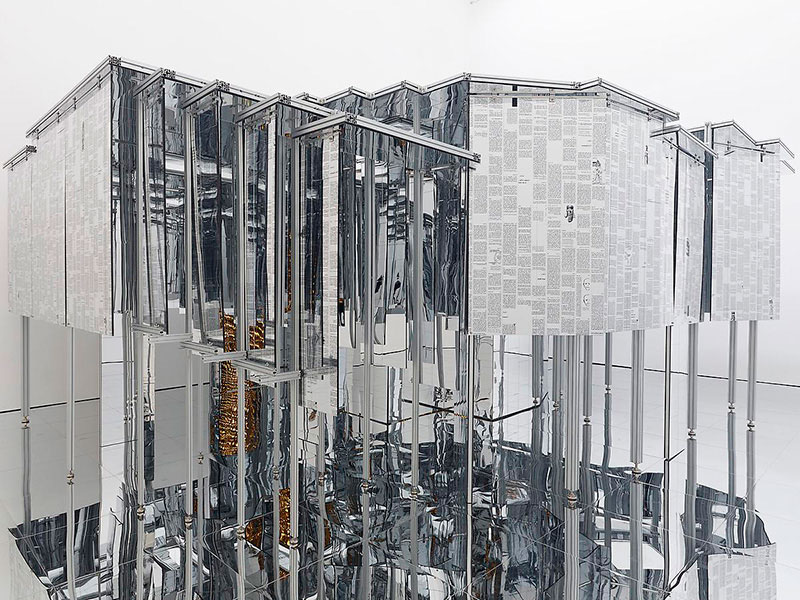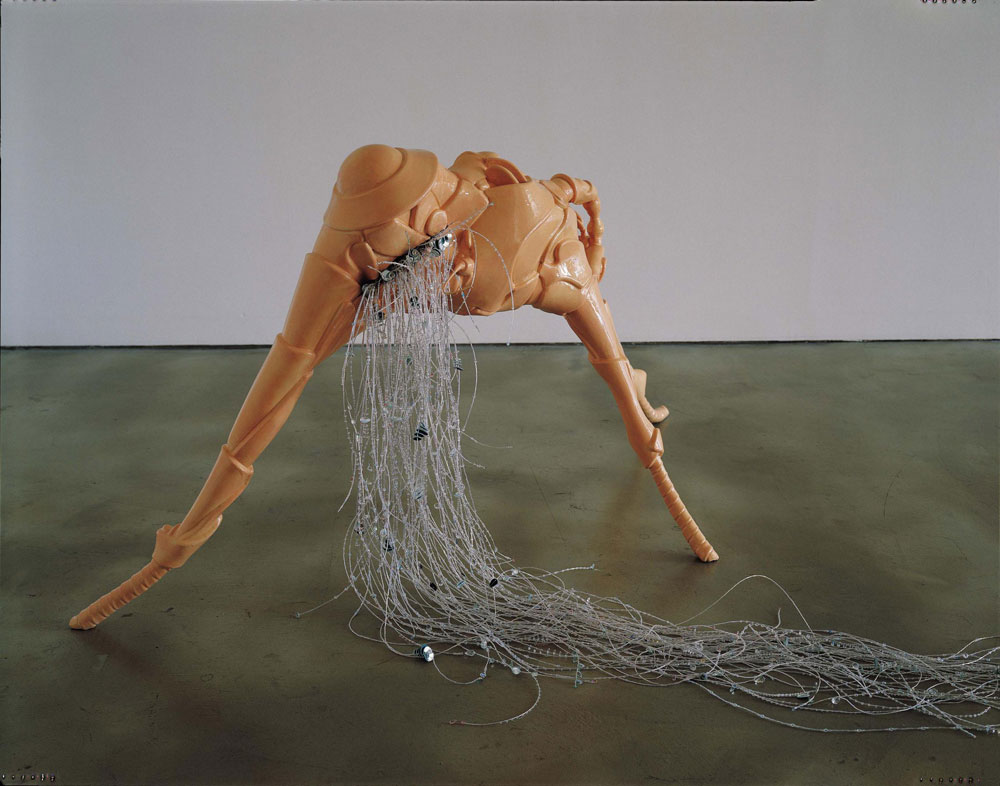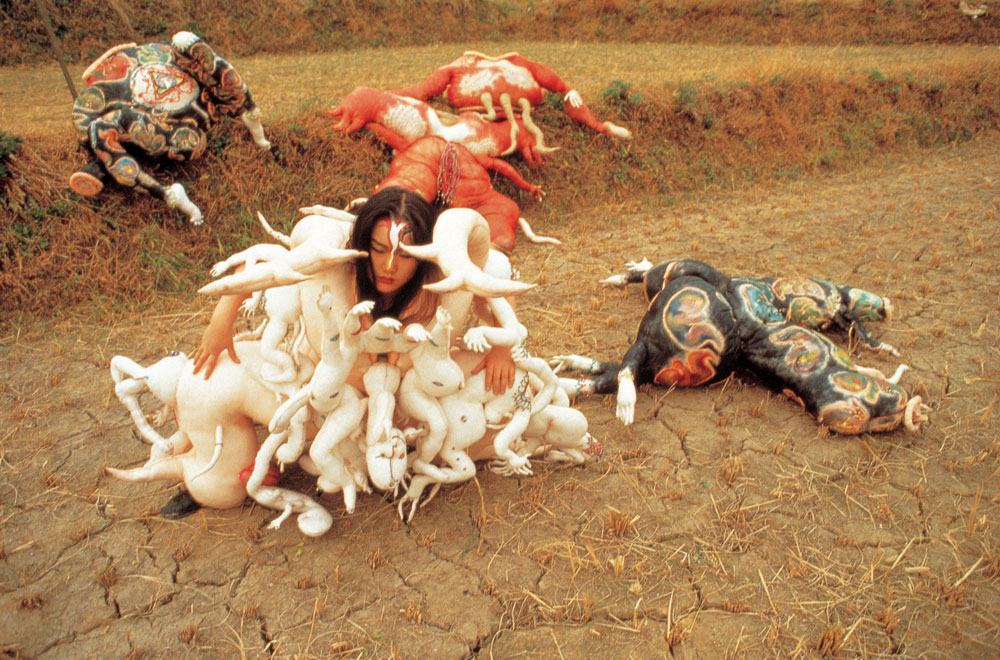TRACES: Lee Bul
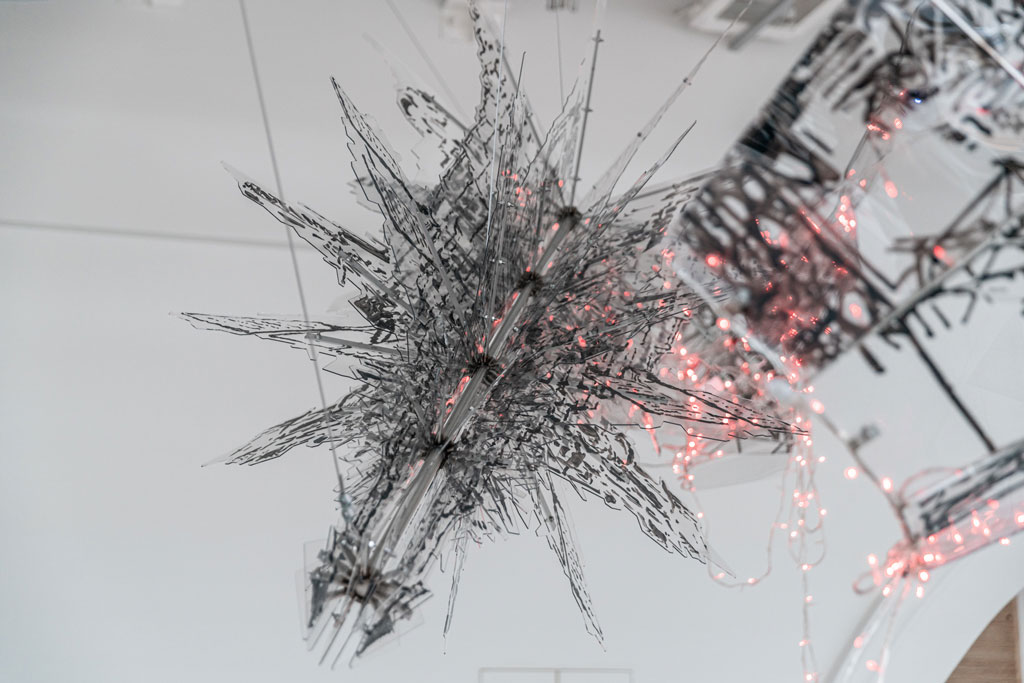 Today is the occasion to bear in mind Lee Bul (25/1/1964- ). Lee Bul is one of the most important Korean artists of her generation, having received significant international recognition for her formally inventive and intellectually provocative work. This column is a tribute to very important artists, living or dead, who have left their trace in Contemporary Art. Through documents or interviews, starting with: moments and memories we reveal out from the past-unknown sides of big personalities, who left their indelible traces in time and history…
Today is the occasion to bear in mind Lee Bul (25/1/1964- ). Lee Bul is one of the most important Korean artists of her generation, having received significant international recognition for her formally inventive and intellectually provocative work. This column is a tribute to very important artists, living or dead, who have left their trace in Contemporary Art. Through documents or interviews, starting with: moments and memories we reveal out from the past-unknown sides of big personalities, who left their indelible traces in time and history…
By Efi Michalarou
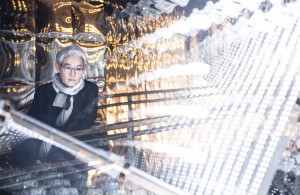 Working in sculpture and installation, Lee Bul culls the form and content of her art from diverse sources, including film, literature, and modern architecture as well as both European and South Korean political and cultural history. Reconceived in elaborate new combinations, these influences shape the artist’s fantastic and often disconcerting dystopian vision. Born in South Korea in 1964, Lee Bul was born in 1964 in a remote South Korean village where her dissident parents were in hiding from the oppressive government and grew in a politically charged environment, amid turbulent social changes. South Korea in the 1980s and 1990s was a period of transition from military dictatorship to democracy, and of development in modernisation and economic strength. During the 1980s she was a founding member of Museum, a loose collective of underground artists, performers, and musicians. After graduating in sculpture from Hongik University, Seoul in 1987, Lee Bul shifted her artistic practice from the studio to public space performances. With these works, she called into question the perception of “female” beauty and cru-cially the role of women in society. For example, in “Cravings” (1989), she went against the typical artistic convention by donning a monstrous form made from soft fabric, that featured tentacle-like limbs. During the performance “Abortion” (1989), she hung naked and upside down for nearly two hours, tied to a corset, alluding to the suffering associated with having an abortion, which is still illegal in Korea. When Lee Bul started her widely known series “Cyborg” (1997–2011) in the mid-1990s, she turned almost entirely away from performance to explore three-dimensional sculptural works and the pursuit of perfection by fusing humans and machines. The poses portrayed by these female cyborgs recall iconic, classical sculptures such as the Venus of Milo, while their buxom proportions are typical of depictions of Western women in sexually-charged Japanese comics and cartoons. Every figure in this series is, however, in some way incomplete. Their missing heads or limbs suggest that the notion of the “perfect” figure is still undergoing transformation. In Lee Bul’s later work, the cyborgs take on darker and more complex manifestations with references to surrealist archetypes. The artist calls these extravagant hybrids, both living organism and machine, “anagrammatic morphologies”. Her paintings and wall-mounted works made of silk, leather and mother of pearl such as “Untitled (Silk Painting – Yellow)”, “Untitled (Silk Painting – Black)”, “Untitled (Mekamelencolia – Yellow Velvet # 1)” and “Untitled (Willing To Be Vulnerable – Velvet # 6 DDRG24OC)” attest to the artist’s profound and long-standing interest in experimenting with organic materials. Lee Bul’s examination of bodies led her to explore models of utopian urban landscapes. In 2005 she began creating models inspired by modernist architectural designs. These complex sculptures and accompanying works on paper and canvas form an imaginative topography of utopian aspiration and failure. The topographies seem to expose the inner workings of her earlier works and become a metaphor for the networked, subterranean root-like systems of our cities, and furthermore for societies and their utopian ideas. Lee Bul’s visions of an ideal society are inspired, among other things, by the architectural fantasies of German architect Bruno Taut, particularly by his “Alpinen Architektur” (1919), in which buildings recall enormous mountain ranges. It is Lee Bul’s interest in how perfection is pursued that links these visionary landscapes to her earlier work. Lee Bul’s later works allude to various cultural and intellectual references, from critical theory to the dystopian dream worlds of speculative fiction and films. During the development of her oeuvre, Lee Bul’s work evolved from large-format compositions such as “Mon grand récit: Weep into stones …” (2005), where she collides together two divergent utopian architectural visions, into immersive install-tions that alter our perception in particular through the use of mirrors. Her expansive landscapes can be described as mediators between architecture and the body, and assume a variety of forms and con-figurations: utopian urban landscapes and cartographies; textures and surface structures such as human skin; or forms bristling with the incessant search for an ideal place. “Bunker (M. Bakhtin)” (2007/2012), a black, rocky mountain with a cavernous interior that can be accessed through a large crevice, transports us into a disorienting soundscape, whereas the labyrinthine works “Via Negativa” (2012) and “Via Negativa II” (2014) interrupt and disturb our sense of space with highly reflective surfaces. “Willing To Be Vulnerable – Metalized Balloon” (2015-16) is a 17-meter-long sculpture evoking the Hindenburg Zeppelin and referencing its disaster in 1937. The work is both ambitious and optimistic, reflecting technical failure, fragmentation and destruction, and crucially the underlying tensions that are inherent to all attempts at utopian idealism. Lee Bul’s latest work, “Scale of Tongue”, was originally conceived as a form of portable architecture and recalls a boat’s hull, an improvised shelter, or a mountainous landscape, and subtly alludes to the Sewol ferry accident on 16 April 2014. The MV Sewol incident serves as an internal point of reference, only becoming evident at the sight of the boat, which slowly disintegrates into abstract forms and merges with the formations of the surrounding landscape.
Working in sculpture and installation, Lee Bul culls the form and content of her art from diverse sources, including film, literature, and modern architecture as well as both European and South Korean political and cultural history. Reconceived in elaborate new combinations, these influences shape the artist’s fantastic and often disconcerting dystopian vision. Born in South Korea in 1964, Lee Bul was born in 1964 in a remote South Korean village where her dissident parents were in hiding from the oppressive government and grew in a politically charged environment, amid turbulent social changes. South Korea in the 1980s and 1990s was a period of transition from military dictatorship to democracy, and of development in modernisation and economic strength. During the 1980s she was a founding member of Museum, a loose collective of underground artists, performers, and musicians. After graduating in sculpture from Hongik University, Seoul in 1987, Lee Bul shifted her artistic practice from the studio to public space performances. With these works, she called into question the perception of “female” beauty and cru-cially the role of women in society. For example, in “Cravings” (1989), she went against the typical artistic convention by donning a monstrous form made from soft fabric, that featured tentacle-like limbs. During the performance “Abortion” (1989), she hung naked and upside down for nearly two hours, tied to a corset, alluding to the suffering associated with having an abortion, which is still illegal in Korea. When Lee Bul started her widely known series “Cyborg” (1997–2011) in the mid-1990s, she turned almost entirely away from performance to explore three-dimensional sculptural works and the pursuit of perfection by fusing humans and machines. The poses portrayed by these female cyborgs recall iconic, classical sculptures such as the Venus of Milo, while their buxom proportions are typical of depictions of Western women in sexually-charged Japanese comics and cartoons. Every figure in this series is, however, in some way incomplete. Their missing heads or limbs suggest that the notion of the “perfect” figure is still undergoing transformation. In Lee Bul’s later work, the cyborgs take on darker and more complex manifestations with references to surrealist archetypes. The artist calls these extravagant hybrids, both living organism and machine, “anagrammatic morphologies”. Her paintings and wall-mounted works made of silk, leather and mother of pearl such as “Untitled (Silk Painting – Yellow)”, “Untitled (Silk Painting – Black)”, “Untitled (Mekamelencolia – Yellow Velvet # 1)” and “Untitled (Willing To Be Vulnerable – Velvet # 6 DDRG24OC)” attest to the artist’s profound and long-standing interest in experimenting with organic materials. Lee Bul’s examination of bodies led her to explore models of utopian urban landscapes. In 2005 she began creating models inspired by modernist architectural designs. These complex sculptures and accompanying works on paper and canvas form an imaginative topography of utopian aspiration and failure. The topographies seem to expose the inner workings of her earlier works and become a metaphor for the networked, subterranean root-like systems of our cities, and furthermore for societies and their utopian ideas. Lee Bul’s visions of an ideal society are inspired, among other things, by the architectural fantasies of German architect Bruno Taut, particularly by his “Alpinen Architektur” (1919), in which buildings recall enormous mountain ranges. It is Lee Bul’s interest in how perfection is pursued that links these visionary landscapes to her earlier work. Lee Bul’s later works allude to various cultural and intellectual references, from critical theory to the dystopian dream worlds of speculative fiction and films. During the development of her oeuvre, Lee Bul’s work evolved from large-format compositions such as “Mon grand récit: Weep into stones …” (2005), where she collides together two divergent utopian architectural visions, into immersive install-tions that alter our perception in particular through the use of mirrors. Her expansive landscapes can be described as mediators between architecture and the body, and assume a variety of forms and con-figurations: utopian urban landscapes and cartographies; textures and surface structures such as human skin; or forms bristling with the incessant search for an ideal place. “Bunker (M. Bakhtin)” (2007/2012), a black, rocky mountain with a cavernous interior that can be accessed through a large crevice, transports us into a disorienting soundscape, whereas the labyrinthine works “Via Negativa” (2012) and “Via Negativa II” (2014) interrupt and disturb our sense of space with highly reflective surfaces. “Willing To Be Vulnerable – Metalized Balloon” (2015-16) is a 17-meter-long sculpture evoking the Hindenburg Zeppelin and referencing its disaster in 1937. The work is both ambitious and optimistic, reflecting technical failure, fragmentation and destruction, and crucially the underlying tensions that are inherent to all attempts at utopian idealism. Lee Bul’s latest work, “Scale of Tongue”, was originally conceived as a form of portable architecture and recalls a boat’s hull, an improvised shelter, or a mountainous landscape, and subtly alludes to the Sewol ferry accident on 16 April 2014. The MV Sewol incident serves as an internal point of reference, only becoming evident at the sight of the boat, which slowly disintegrates into abstract forms and merges with the formations of the surrounding landscape.
